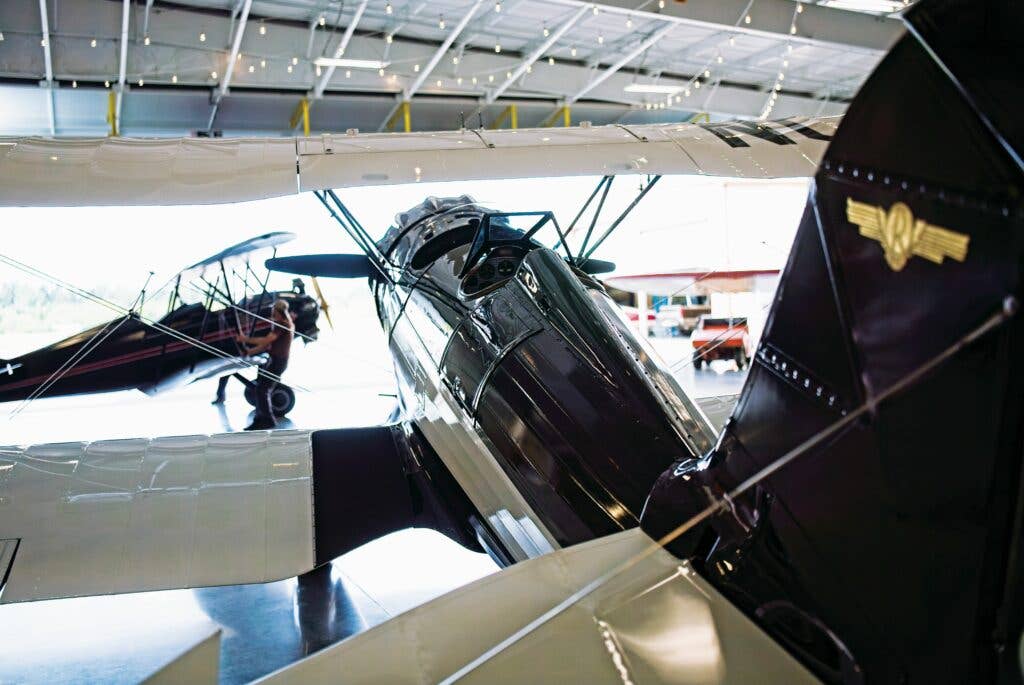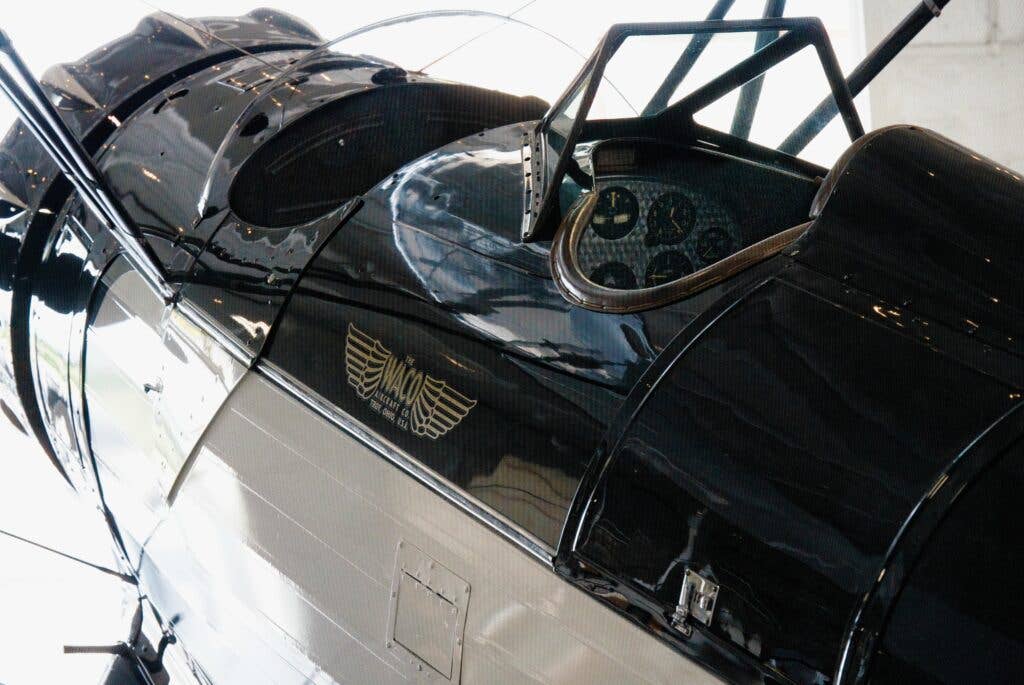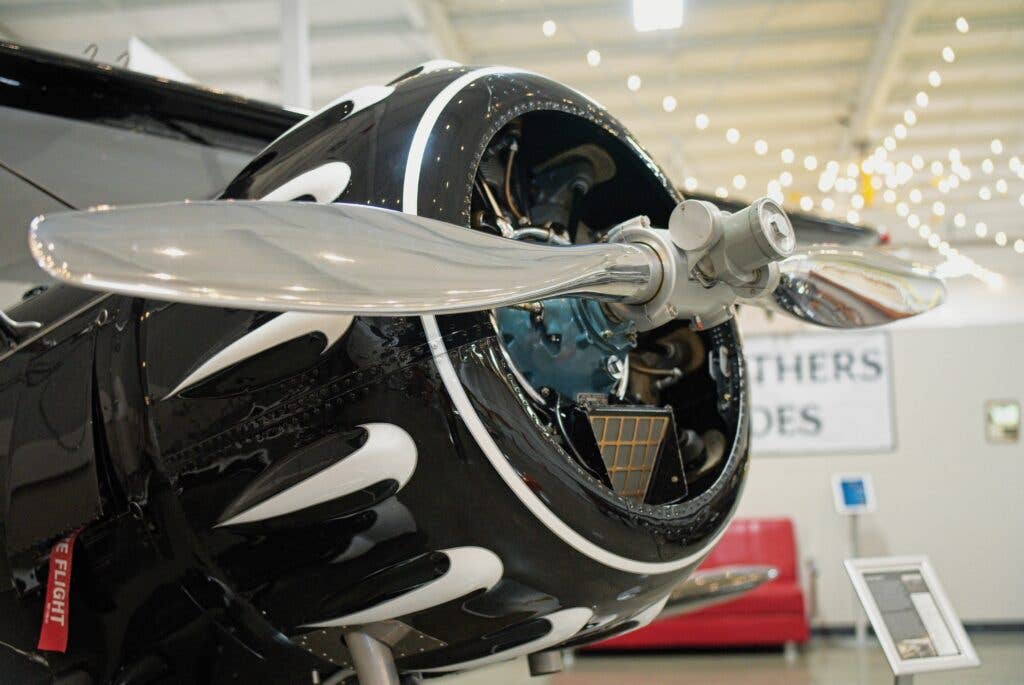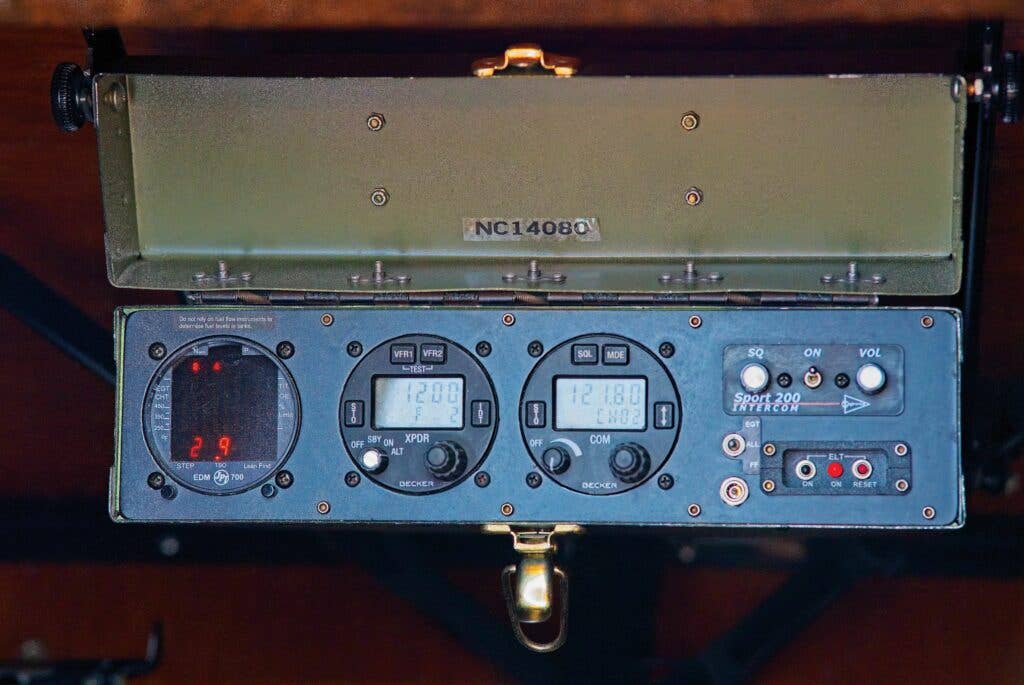Be Safe But Authentic with Your New Old Panel
The restoration of this storied WACO shows it’s not hard to enjoy modernly vintage instruments.

Vintage instruments above, modern below on a 1934 WACO YMF-3. [Rebecca Rambal]
There is a lot of compromise in aviation.
When a person owns an open-cockpit vintage aircraft, one of the first decisions to make is how radio communications will be addressed. You can utilize a portable battery-operated handheld radio so the instrument panel remains true to factory specs, you could eschew the legacy panel gauges and install a modern radio and the supporting electrical system in the name of safety and convenience—or you can get creative and have the best of both worlds.
The “both” option was taken by Bob and Bill Juranich. The brothers own the Gig Harbor Vintage Aero Museum at Tacoma Narrows Airport (KTIW) in Washington. The airport is Class D and located approximately 15 nm southwest of Seattle-Tacoma International Airport (KSEA). It lies beneath Class Bravo airspace and, as such, inside the Mode C veil generally requiring a transponder. Still, the most modern aircraft in the museum’s collection is a 1953 Cessna 195.
If you're not already a subscriber, what are you waiting for? Subscribe today to get the issue as soon as it is released in either Print or Digital formats.
Subscribe NowMost of the designs herald from the 1930s and ’40s, and several are ADS-B compliant, though they rolled off the assembly line decades before radios were standard equipment, transponders were in common use, and radar—the technological grandfather of ADS-B—had even been dreamed about for light aircraft. And here’s the best part—you can't tell by looking at the aircraft that they feature this modern device. You won't find radio or ADS-B antennae, which frankly would stick out like a frog in a punch bowl. These airplanes look like they have just rolled out of the factory in a time when you could spend the day at the movies for 5 cents, and the console cabinet radio was the centerpiece of many a living room.
“That's because Bob Johnson, the master mechanic who has restored these aircraft, is really good about hiding things in plain sight,” says Brandon Bainbridge, the director of operations at the VAM, which is primarily located in a 12,400-square-foot hangar. The facility is part museum, part event space, part repository for Juranich family history, and part high-end pilot cave. You can picture your aviation-enthused forebearers having such a space.
That was true for the Juranichs, who grew up around civilian aviation in the Midwest. Their father, Joe, was a pilot and owned Northern Airport in Basehor, 13 miles south of Leavenworth, Kansas. The brothers Juranich took to aviation in their teens. Bob, the older brother, soloed at age 17 in a 1946 J-3 Cub. Bill—not to be outdone—bought his first airplane, a 1946 Taylorcraft, at the age of 18.
You will find the J-3 Cub, the Taylorcraft, and their father's 1946 Piper Super Cruiser meticulously restored and on display as part of the museum collection. You can thank A&P/IA Bob Johnson for that.
A Storied WACO
The Juranichs have known Johnson for decades. He has overseen the restoration of several of the brothers’ aircraft, including the 1934 WACO YMF-3, a black and white open-cockpit biplane that some describe as the crown jewel in the VAM collection.
According to Bob Juranich, when WACO NC14080 rolled out of the factory in Troy, Ohio, it was destined to be a rich man's toy. The Great Depression was underway, and the only people with the money for such an expensive hobby as flying were the folks with large bank accounts or their sons and daughters. The first owner of the YMF was Philip T. Sharples, an industrialist who in 1939 also became one of the founding members of the Aircraft Owners and Pilots Association. The WACO was in Sharples’ care for about a year until he experienced a nose over. The airplane landed on its back and was damaged. The YMF went back to the factory for repairs. The next owner was Benjamin Brewster, also an industrialist— a railroad tycoon and trustee for Standard Oil.


“At the time, the aircraft was stationed at Roosevelt Field, Long Island, New York,” says Juranich, gesturing to a decal on the vertical stabilizer. “That’s the same airport Charles Lindbergh launched out of to fly the Atlantic in 1927.”
Brewster sold the WACO to Stephen DuPont, who kept it until the early 1940s. As the winds of war began to churn, DuPont sold the YMF to a flying service, where it was used as part of the Civilian Pilot Training Program. Then, as now, student pilots could be rough on the equipment. The WACO endured multiple student-induced damage events, including a collision with a snowbank that effectively ended its flying career for several decades. The bent and battered wreckage passed through many hands as a project until 2006, when Bob Juranich, who saw a YMF at a local fly-in and decided he wanted one, bought it from Harold Johnson in Moraine, Ohio.
For Johnson, A&P/IA (no relation to the previous owner), the WACO was the gauntlet of challenge being thrown down, as the airplane had not flown since 1943. Johnson, who has been turning wrenches since 1970, noted with some relief that the stock Jacobs L4 /R755-7 engine had been overhauled in the 1990s, and that was a big chunk of the work—so he could focus on the rest of the airplane. He paid special attention to the cockpit, which he determined needed to be aesthetically pleasing, period correct, and able to function safely in modern airspace.
A Special Update Process
The challenge with restoring panels in vintage designs to modern airworthiness, says Johnson, is that modern radios, navigation tools, and their support cables destroy the integrity of the design.
“I hate to see beautiful vintage biplanes with white wires going everywhere,” Johnson says with a cringe and shake of his head. “I always hide them behind tubing, put them in leather or use black friction tape or camouflage them in a way so they match the interior of the airplane.”
Go ahead and look in the cockpit of the YMF: You won’t see any radio, GPS, or transponder—but you will see a 1930s map case. Inside it, you find modern devices.


“It was Bob Juranich’s idea to hide them there,” says Johnson. “The map case looks like you carry it out to the airplane. There is even a leather handle on it. I painted it with crinkle paint to give it the right look.”
Several of the aircraft are equipped with ADS-B Out, although they are technically exempt because they were not originally certificated with an engine-driven electrical system, per FAR 91.215(b)(3) and 91.215(b) (5). Therefore, they need not adhere to the rule that went into effect on January 1, 2020, for flight in Class A, B, C, and D airspace where altitude-reporting transponders were required prior to that date. However, given that the museum is located at a busy Class Delta airport under a shelf of Class Bravo and surrounded by a Mode C veil, the Juranichs and Johnson agreed that ADS-B was a wise choice. But how to do it without installing a clunky antennae and ADS-B transponder?
“According to SkyBeacon, ADS-B can function through fabric,” says Johnson. “Both the Command-Aire and the WACO have ADS-B. Basically we just ziptied it to one rib and powered it with some nav-light wire as if it had been on the tail.”
The ADS-B pairs with the pilot’s iPad in the cockpit. The iPad is easily removed and stored when the airplane is on the ground on display and redeployed for flight.
Historic Renovations
ADS-B isn’t the only modern touch on the airplane, says Bainbridge. A few of the airplanes have been retrofitted with electric starters and batteries. Since the aircraft weren't originally designed to have them, Johnson figured out a way to hide the modern conveniences. I won't tell you where he hid them, but I will say you have to do a bit of a scavenger hunt to find the battery and switches for it on the instrument panel. Johnson has antiqued the panel so they look like original, fresh-out-of-the-factory equipment.
“In the Monocoupe, for example, the panel, which is metal, was made to look like it is made of wood,” Bainbridge says, adding that he spent the last two years of his Air Force career in Pearl Harbor working at the Pearl Harbor Aviation Museum, where the saying is “history matters.”
“That’s a theme I carry with me now. I want people to see these airplanes still fly. The Juranichs and Bob Johnson want to keep the airplanes flying, their ethos is ‘We don't want airplanes that just collect dust.’”
Bainbridge shares this sentiment, and he’s been using his mechanic skills to make an interactive aircraft that will be a “kid-friendly” exhibit.
“It’s a Reno Racer just for kids,” he says. “I want them to flip the switches and turn on the lights and go crazy.”
This column first appeared in the August 2023/Issue 940 of FLYING’s print edition.

Subscribe to Our Newsletter
Get the latest FLYING stories delivered directly to your inbox







